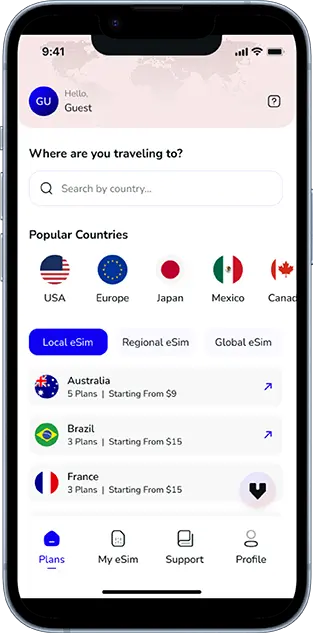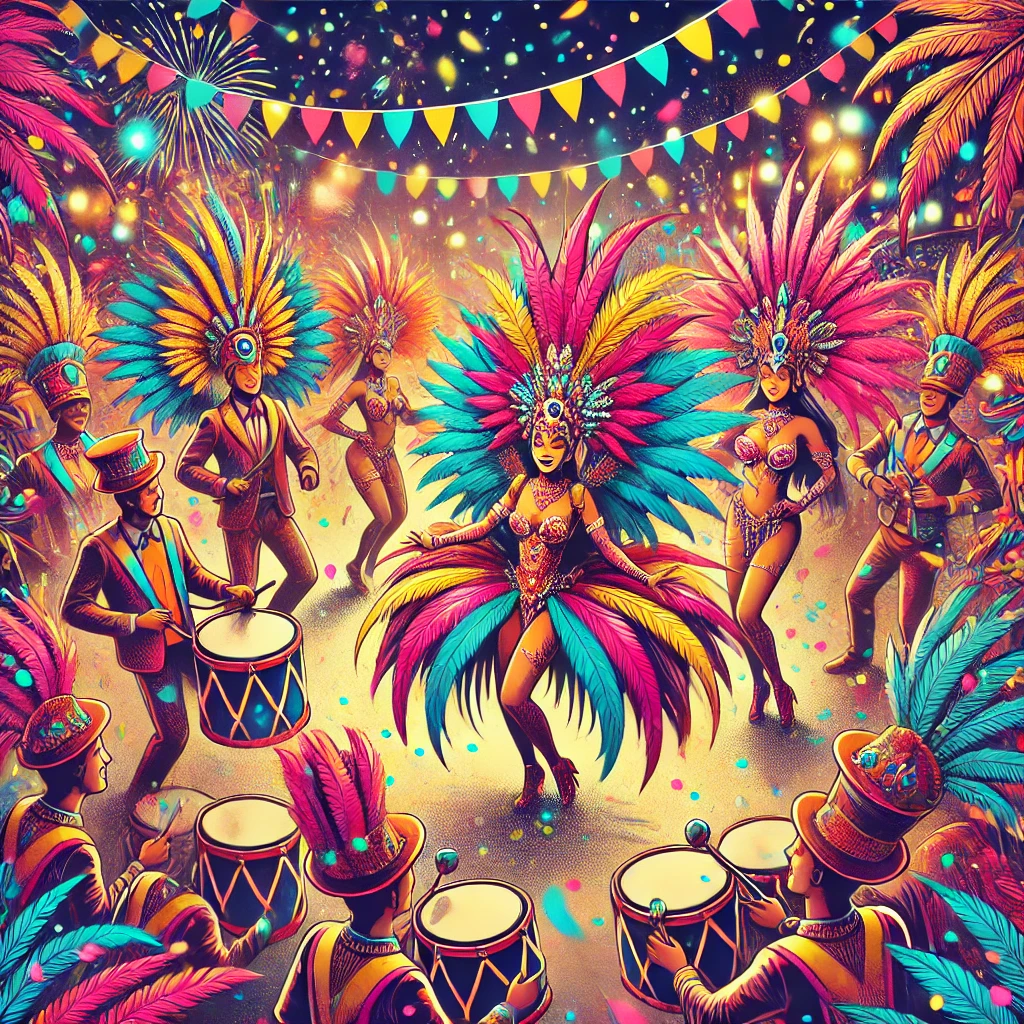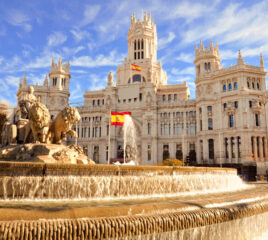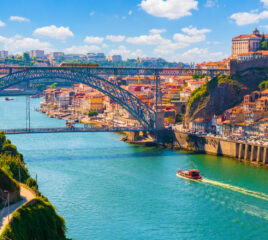Note that iPhone devices from Mainland China aren’t eSIM compatible. Also iPhone devices from Hong Kong and Macao aren’t compatible (except for iPhone 13 Mini, iPhone 12 Mini, iPhone SE 2020 and iPhone XS)
Brazil is a land of vibrant rhythms, pulsating beats, and electrifying dance moves. Music and dance are deeply embedded in the nation’s cultural fabric, reflecting its rich history and diverse influences. From the energetic samba to the romantic forró, each genre tells a story of Brazil’s past and present. Let’s dive into the heart of Brazilian music and dance, exploring their origins, significance, and how they continue to shape Brazil’s identity.
The Rich History of Brazilian Music and Dance
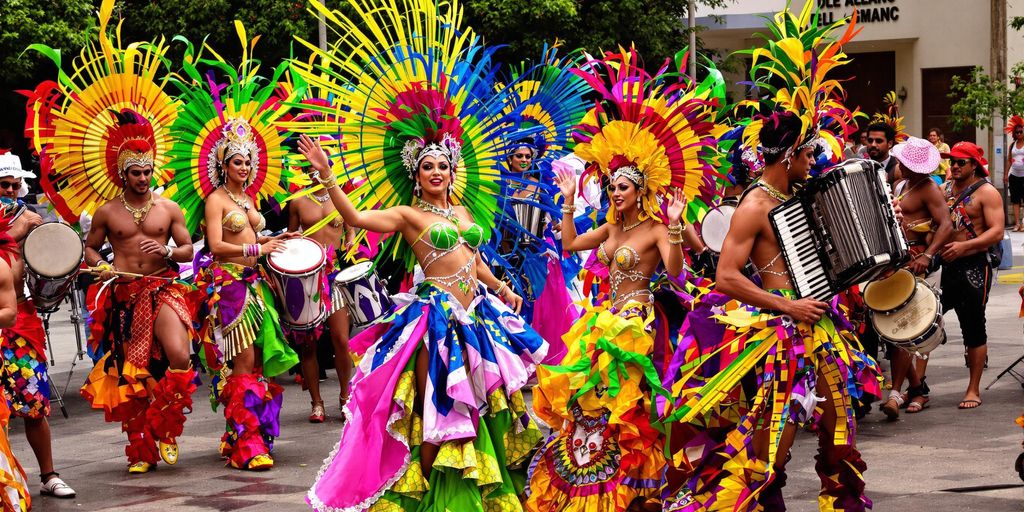
Origins of Brazilian Rhythms
Brazilian music has roots that stretch deep into its indigenous past, long before colonization. Indigenous tribes used music as a way to communicate with nature and their gods, employing instruments like flutes and drums made from natural materials. When African slaves arrived, they brought with them complex rhythms and traditions, which began to blend with indigenous sounds. Over time, European settlers added their own musical traditions, creating a unique fusion that set the stage for Brazil’s diverse musical landscape.
Cultural Influences on Music and Dance
Brazilian music and dance are a melting pot of influences. From the African beats that gave birth to samba and maracatu to the European styles like polka and waltz that shaped forró and choro, every region tells a story of cultural exchange. The blending of these styles created something entirely new, reflecting Brazil’s history of colonization, migration, and resilience. Today, these influences are still felt, with modern genres often paying homage to their roots.
Evolution Over the Decades
Brazilian music has undergone significant changes over the years. In the early 20th century, samba became a defining genre, representing the voice of the working class. The 1950s saw the rise of bossa nova, a softer, jazz-inspired sound. By the 1990s, electronic elements were being incorporated into traditional styles like forró, creating entirely new genres. Each decade brought innovation while keeping the essence of Brazilian music alive.
Regional Variations in Styles
Brazil is a vast country, and its music and dance styles vary widely by region. In the northeast, forró and maracatu dominate, reflecting the area’s Afro-Brazilian heritage. The southeast is home to samba and bossa nova, while the south offers styles like vanerão and milonga, influenced by neighboring Argentina and Uruguay. Each region not only has its own sound but also its own way of dancing, making every part of Brazil a unique cultural experience.
Impact of Colonization on Music
Colonization played a significant role in shaping Brazilian music. Portuguese settlers introduced string instruments like the guitar and cavaquinho, which became staples in genres like samba and choro. However, the African influence, brought by enslaved people, was perhaps the most transformative. Drums, call-and-response singing, and syncopated rhythms became the backbone of many Brazilian styles, creating a rich, layered sound that is unmistakably Brazilian.
Role of Music in Brazilian Festivals
Music is the heartbeat of Brazilian festivals, from the world-famous Carnival to smaller, regional celebrations. Samba is the star of Carnival, with its infectious rhythms and elaborate parades. In the northeast, forró takes center stage during the June Festivals, a celebration of rural traditions. Music also plays a key role in religious events, blending sacred and secular elements to create a uniquely Brazilian form of worship. These festivals not only showcase Brazil’s musical diversity but also bring communities together, reinforcing a shared cultural identity.
Samba: The Heartbeat of Brazil
Origins of Samba in Rio de Janeiro
Samba’s story begins in the early 20th century, deeply rooted in the Afro-Brazilian communities of Rio de Janeiro. It emerged as a blend of African rhythms brought by enslaved people and European musical traditions, creating a unique and vibrant sound. Samba was more than just music; it was a form of storytelling, a way to express joy, sorrow, and resilience. Over time, it became a defining feature of Brazil’s cultural identity, particularly during Carnival celebrations, where it evolved into the soundtrack of the nation’s most famous festival.
Key Instruments in Samba Music
The instruments of samba are as lively and dynamic as the music itself. Here are some of the key players:
- Surdo: A large bass drum that provides the heartbeat of samba, keeping the rhythm steady.
- Tamborim: A small drum played with a stick, adding sharp, syncopated beats.
- Cuíca: Known for its squeaky, high-pitched sound, this friction drum adds a playful element to the rhythm.
These instruments, along with others like the agogô and pandeiro, create the layered, infectious rhythms that make samba irresistible.
Samba Schools and Their Role
Samba schools are more than just music and dance groups; they are community hubs. These schools prepare all year for Carnival, designing elaborate floats, costumes, and choreographies. Each school tells a story through its parade, often highlighting historical or social themes. The competition between samba schools is fierce, and winning the title at Rio’s Sambadrome is a matter of immense pride.
Samba as a Symbol of Resistance
During periods of political and social oppression, samba became a symbol of resistance. The music carried the voices of marginalized communities, speaking out against inequality and injustice. Despite efforts to suppress it, samba thrived, becoming a unifying force for people from all walks of life.
Famous Samba Artists
Samba has produced countless legendary artists who have shaped its evolution. Names like Cartola, Noel Rosa, and Clara Nunes are etched into the genre’s history. Each brought their own style and innovation, ensuring samba’s enduring appeal. Their songs continue to inspire new generations of musicians and fans.
Samba in Modern Brazilian Culture
Today, samba remains a cornerstone of Brazilian culture. It’s not just confined to Carnival; you’ll find samba being played in bars, at family gatherings, and in street performances across the country. Modern artists have blended samba with other genres, keeping it fresh and relevant while honoring its roots. Whether traditional or contemporary, samba continues to capture the spirit of Brazil, bringing people together through its vibrant rhythms and melodies.
Forró: A Dance of the Northeast
The Roots of Forró Music
Forró finds its origins in the rural areas of Brazil’s Northeast, where it began as a celebration of life, love, and community. The name “Forró” is thought to be derived from the word “forrobodó,” which means “party” or “commotion.” This lively music and dance style was heavily influenced by European folk traditions like the polka and mazurka, as well as African rhythms brought over during the colonial era. Over time, it became a staple of Brazilian culture, especially in the Northeast, where it was performed at festivals and social gatherings.
Traditional Instruments in Forró
The sound of Forró is unmistakable, thanks to its unique combination of instruments. The accordion, or “sanfona,” takes center stage, providing the melody. The zabumba, a type of bass drum, lays down the rhythm, while the triangle adds a sharp, metallic beat. Together, these instruments create a sound that is both vibrant and deeply rooted in tradition. In modern adaptations, other instruments like electric guitars and keyboards are sometimes added, but the classic trio remains iconic.
Different Styles of Forró Dancing
Forró isn’t just one dance—it encompasses several styles, each with its own flair. The most traditional style, often called “Forró Pé de Serra,” involves close partner dancing with simple, swaying movements. “Forró Universitário,” popular among younger generations, incorporates influences from salsa and samba, making it more dynamic and versatile. There’s also “Arrasta-pé,” a faster, more energetic version that gets everyone on their feet. Regardless of the style, Forró is always danced in pairs, emphasizing connection and rhythm.
Forró’s Popularity Beyond Brazil
While Forró originated in Brazil, its appeal has crossed borders. In Europe, for example, Forró communities have sprung up in cities like Paris and London, where dance enthusiasts gather to learn and perform. Festivals dedicated to Forró are now held worldwide, attracting both Brazilian expatriates and international fans. The music’s infectious rhythm and the dance’s intimate style make it accessible and enjoyable for people from all walks of life.
Influence of Forró on Other Genres
Forró has also left its mark on other musical genres. It played a role in the development of Lambada, a dance and music style that gained global popularity in the 1980s. Artists from Brazil’s Música Popular Brasileira (MPB) movement, like Gilberto Gil and Alceu Valença, have incorporated Forró elements into their songs, blending traditional sounds with contemporary influences. This cross-genre experimentation has helped keep Forró relevant and innovative.
Modern Adaptations of Forró
In recent years, Forró has evolved to include modern elements while staying true to its roots. “Forró Eletrônico” incorporates electronic beats and synthesizers, appealing to younger audiences and club-goers. Some bands have even fused Forró with pop and rock, creating a hybrid sound that broadens its reach. Despite these innovations, traditional Forró remains alive and well, especially in the Northeast, where it continues to be a cherished cultural tradition. Whether in its classic or modern form, Forró remains a vibrant and unifying force in Brazilian culture.
Bossa Nova: The Gentle Revolution
The Birth of Bossa Nova
Bossa Nova emerged in the late 1950s in Rio de Janeiro, blending samba rhythms with jazz influences. It was a quieter, more introspective style compared to the lively beats of traditional samba. Musicians like João Gilberto and Antônio Carlos Jobim were at the forefront, crafting songs that felt intimate and poetic. Their music often focused on themes like love, nature, and melancholy, creating a sound that was both soothing and sophisticated. The genre’s defining moment came with “Chega de Saudade,” considered the first Bossa Nova song, which introduced this innovative style to the world.
Key Figures in Bossa Nova History
Several artists played pivotal roles in shaping Bossa Nova. João Gilberto is often called the “father of Bossa Nova” for his distinctive guitar playing and understated vocals. Antônio Carlos Jobim, a master composer, brought the genre to international acclaim with hits like “The Girl from Ipanema.” Vinícius de Moraes, a poet and lyricist, added depth to the genre with his evocative lyrics. Together, these artists created a musical movement that resonated far beyond Brazil’s borders.
Bossa Nova’s Global Influence
Bossa Nova quickly gained international recognition, especially in the United States. In the 1960s, artists like Stan Getz and Astrud Gilberto popularized the genre with recordings that blended Bossa Nova with jazz. “The Girl from Ipanema” became a global hit, introducing millions to the genre’s smooth, laid-back sound. Bossa Nova’s influence can still be heard in various musical styles worldwide, from jazz to pop.
Signature Sounds of Bossa Nova
The hallmark of Bossa Nova lies in its simplicity and elegance. The guitar is central, often played with a syncopated rhythm that mimics samba’s beat but in a softer, more subdued manner. Vocals are typically gentle and conversational, almost whispered. The genre also incorporates elements of jazz, such as complex harmonies and improvisation. This unique blend creates a sound that is both relaxing and intellectually engaging.
Bossa Nova in Film and Media
Bossa Nova has made its mark in film and media, often used to evoke a sense of sophistication or nostalgia. Movies like “Orfeu Negro” (Black Orpheus) introduced the genre to international audiences, while countless commercials and TV shows have used its melodies to set a mood. The genre’s timeless appeal ensures its continued presence in popular culture.
How Bossa Nova Shaped Jazz
Bossa Nova didn’t just borrow from jazz; it also gave back. The genre introduced new rhythms and harmonies that influenced jazz musicians worldwide. Collaborations between Brazilian and American artists, like those between João Gilberto and Stan Getz, created a fusion that enriched both genres. Today, Bossa Nova remains a staple in jazz repertoires, a testament to its enduring impact on the music world.
Axé: The Energy of Bahia
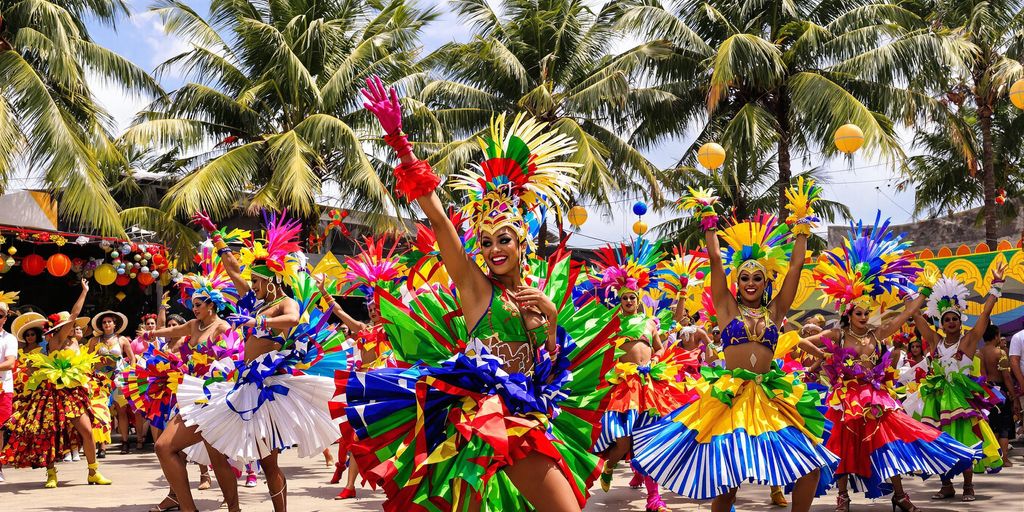
Origins of Axé Music
Axé music emerged in the 1980s in Salvador, Bahia, during a time of cultural revival in Brazil. The genre blends Afro-Brazilian rhythms with elements of samba, reggae, and pop music, creating a vibrant and energetic sound. Its name, “Axé,” comes from a Yoruba term meaning “positive energy” or “spiritual force,” reflecting its roots in Afro-Brazilian traditions and its ability to unite people through music and dance.
Dance Styles Associated with Axé
Axé music isn’t just about the sound; it’s inseparably linked to dance. The choreography is often lively and accessible, designed to be performed by large groups. Popular moves include synchronized arm gestures, hip swings, and footwork that mirrors the upbeat tempo of the music. These dances are staples at Brazilian parties and festivals, where they bring communities together in celebration.
Axé’s Role in Carnival Celebrations
Carnival in Bahia wouldn’t be the same without Axé music. The genre dominates the streets of Salvador during this annual event, with massive “trios elétricos” (mobile sound trucks) blasting Axé hits as crowds follow along, dancing and singing. The music’s infectious energy is a perfect match for the festive spirit of Carnival, making it a cornerstone of the celebration.
Famous Axé Performers
Some of Brazil’s most iconic musicians have risen to fame through Axé music. Artists like Ivete Sangalo, Daniela Mercury, and Claudia Leitte have brought the genre to national and international audiences. Their performances are known for their high energy, colorful costumes, and ability to engage massive crowds.
Cultural Significance of Axé
Axé is more than just music; it’s a cultural phenomenon that reflects the diversity and vibrancy of Bahia. It serves as a platform for Afro-Brazilian identity and pride, celebrating the region’s history and traditions. Through its lyrics, rhythms, and dances, Axé connects people to their roots while also embracing modern influences.
Modern Trends in Axé Music
In recent years, Axé has evolved to incorporate electronic beats and global music trends, making it more accessible to younger audiences. Collaborations with international artists and the inclusion of Axé elements in pop and electronic music have helped the genre maintain its relevance. Despite these changes, Axé continues to be a symbol of joy and cultural expression in Brazil.
The Role of Music in Brazilian Festivals
Carnival and Its Musical Roots
Carnival in Brazil is synonymous with music. Samba, the heartbeat of the celebration, fills the streets with its infectious rhythm. Samba schools spend months preparing elaborate parades, complete with vibrant costumes and floats. These schools compete fiercely, each showcasing their unique musical compositions. Beyond samba, other genres like frevo and axé also make appearances, adding to the diverse soundscape of Carnival.
June Festivals and Forró
The June Festivals, or “Festas Juninas,” are a tribute to rural traditions and are especially vibrant in the northeast. Forró music takes center stage, with its accordion-driven melodies and lively rhythms. Dance floors, often outdoors, are packed with couples performing traditional forró steps. The music reflects the region’s agricultural roots, celebrating the harvest season with joy and community spirit.
Samba in Street Parades
Street parades during Brazilian festivals are a spectacle of sound and movement. Samba bands, known as “blocos,” march through neighborhoods, inviting everyone to join in. The music is loud, energetic, and unifying, turning city streets into open-air dance floors. These parades are a testament to samba’s power to bring people together, regardless of background.
Music in Religious Celebrations
Religious festivals in Brazil often feature music as a form of devotion. Afro-Brazilian traditions like Candomblé incorporate drumming and chanting, creating a spiritual atmosphere. Catholic celebrations, such as processions for saints, include hymns and folk songs. Music bridges the sacred and the communal, making these events deeply meaningful.
Regional Music Festivals
Brazil is home to countless regional music festivals, each showcasing local genres and traditions. From the frevo-filled streets of Recife during Carnival to the bossa nova festivals in Rio, these events highlight the country’s musical diversity. They also serve as platforms for emerging artists to gain recognition.
Impact of Festivals on Local Economies
Music festivals are not just cultural events; they are economic powerhouses. They attract tourists, boost local businesses, and create jobs. Vendors selling food, crafts, and souvenirs thrive during these celebrations. In some regions, festival season is the most lucrative time of the year, demonstrating the financial importance of music in Brazilian culture.
The Instruments That Define Brazilian Music
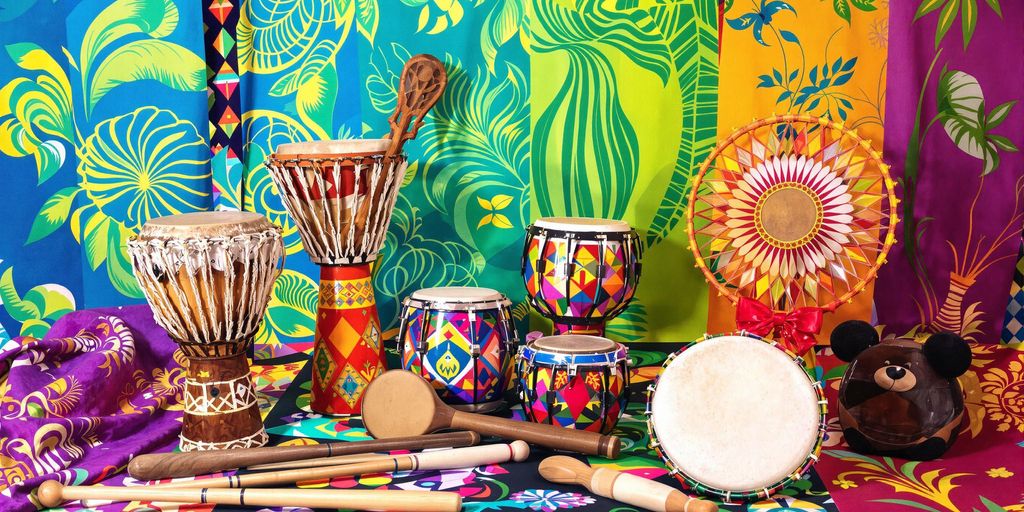
The Iconic Berimbau
The berimbau is a single-string percussion instrument that holds a special place in Brazilian music, especially in capoeira. It’s not just an instrument—it’s a storyteller. The berimbau consists of a wooden bow, a steel string, and a hollow gourd that acts as a resonator. Musicians strike the string with a stick while using a small stone or coin to change the pitch. The rhythmic patterns created by the berimbau are essential to capoeira, guiding the movements of the dancers and setting the tone of the roda (circle).
Percussion Instruments in Samba
Samba’s infectious rhythm owes much to its diverse percussion instruments. The surdo, a large bass drum, provides the heartbeat of samba, while the tamborim, a small hand drum, adds sharp, syncopated accents. The agogô, a double bell, and the cuíca, a friction drum with a high-pitched squeak, bring unique textures to the music. Together, these instruments create a lively and dynamic soundscape that is impossible to resist.
The Accordion in Forró
The accordion is the soul of forró music, a genre that originated in Brazil’s northeast. Paired with the zabumba drum and the triangle, the accordion creates the energetic and danceable melodies that define forró. It’s a versatile instrument, capable of producing both upbeat tunes and soulful ballads, making it a cornerstone of the genre.
String Instruments in Choro
Choro, often called the “soulful serenade” of Brazil, relies heavily on string instruments. The cavaquinho, a small four-stringed instrument, adds a bright and cheerful tone, while the violão (acoustic guitar) provides a rich harmonic foundation. The interplay between these instruments creates the intricate and emotive sound that defines choro.
Wind Instruments in Brazilian Jazz
Brazilian jazz, influenced by samba and bossa nova, often features wind instruments like the saxophone and flute. These instruments bring a smooth, melodic quality to the music, blending seamlessly with the rhythm section. The flute, in particular, is celebrated for its ability to mimic the human voice, adding an expressive layer to the compositions.
Innovations in Brazilian Instrumentation
Brazilian musicians are known for their creativity, often repurposing everyday objects into musical instruments. From the reco-reco, a scraped percussion instrument, to the pandeiro, a type of tambourine, innovation is a hallmark of Brazilian music. This inventive spirit keeps the music evolving, ensuring its relevance across generations.
Choro: The Soulful Serenade
Origins of Choro Music
Choro, often referred to as the “soul of Brazilian music,” has roots tracing back to the late 19th century. Emerging in Rio de Janeiro, it began as a fusion of European dance music like polkas and waltzes with African rhythms brought by enslaved peoples. The term “choro” itself means “cry” or “lament” in Portuguese, though the music is often upbeat and lively. It was initially played by small ensembles in informal settings, such as street corners or backyard gatherings, creating a sense of community and spontaneity.
Key Composers and Performers
Some of the most iconic figures in choro include Pixinguinha, often considered the father of modern choro. His compositions, like “Carinhoso,” remain classics to this day. Other notable contributors include Jacob do Bandolim, whose mastery of the mandolin elevated the genre, and Ernesto Nazareth, who blended classical music with choro elements. These artists not only defined the genre but also influenced generations of musicians to come.
Choro’s Influence on Other Genres
Choro has had a significant impact on various other Brazilian music styles, including samba and bossa nova. Its intricate melodies and improvisational nature have also drawn comparisons to jazz, making it a precursor to the improvisational elements found in later genres. The structure and techniques developed in choro have become foundational in Brazilian music education.
Signature Instruments in Choro
The choro ensemble typically includes instruments like the cavaquinho (a small string instrument resembling a ukulele), the 7-string guitar, and the pandeiro (a type of tambourine). Wind instruments like the flute or clarinet often carry the melody, adding a light, airy quality to the music. These instruments work together to create the intricate, layered sound that defines choro.
Choro in Contemporary Brazil
While choro may not dominate mainstream music charts, it remains a beloved genre in Brazil. Choro clubs and festivals are held regularly, celebrating the music’s rich history and keeping the tradition alive. Younger musicians are also rediscovering choro, blending it with modern styles to create fresh interpretations.
How Choro Reflects Brazilian Identity
Choro is more than just a music genre; it’s a reflection of Brazilian culture and identity. Its ability to blend influences from diverse cultures mirrors Brazil’s own multicultural heritage. Whether played in a formal concert hall or an impromptu street gathering, choro brings people together, embodying the spirit of community and creativity that defines Brazil.
Frevo: The Dance of Umbrellas
The History of Frevo
Frevo originated in the northeastern state of Pernambuco, Brazil, and is deeply connected to the region’s Carnival traditions. The word “frevo” comes from “ferver,” which means “to boil” in Portuguese, symbolizing the energetic and lively nature of this dance. It emerged in the late 19th century as a fusion of military marches, capoeira movements, and European polka. Initially, frevo was performed by brass bands accompanying street parades, and over time, it evolved into a unique dance style characterized by its vibrant energy and intricate footwork.
Frevo’s Connection to Carnival
Frevo is inseparable from Carnival in Pernambuco, particularly in the cities of Recife and Olinda. During these festivities, frevo bands, known as “orquestras de frevo,” lead parades with their upbeat rhythms, while dancers showcase their athleticism and creativity. The dance is not just a performance; it’s a celebration of community and culture. The lively atmosphere, combined with the colorful costumes and props, makes frevo one of the most iconic elements of Brazilian Carnival.
Unique Dance Moves in Frevo
Frevo dance is known for its fast-paced, acrobatic movements. Dancers often incorporate jumps, spins, and kicks into their routines, making it a highly dynamic and visually captivating art form. The footwork is intricate, requiring precision and stamina. Many moves are inspired by capoeira, blending martial arts elements with dance. This combination of athleticism and artistry makes frevo both challenging and exhilarating to perform.
Costumes and Props in Frevo
One of the most recognizable aspects of frevo is the use of small, colorful umbrellas. These umbrellas are not just decorative; they are integral to the dance, often used as props to enhance the performance. Dancers twirl, spin, and balance the umbrellas as they move, adding an extra layer of complexity to the choreography. The costumes are equally vibrant, featuring bright colors and patterns that reflect the joyous spirit of frevo.
Frevo’s Musical Characteristics
The music of frevo is just as energetic as the dance itself. It is typically performed by brass bands, with instruments like trumpets, trombones, and saxophones taking center stage. The rhythm is fast and syncopated, creating an infectious energy that compels people to dance. Frevo music often features improvisation, allowing musicians to showcase their skill and creativity.
Preservation of Frevo Traditions
Despite its historical roots, frevo continues to thrive in modern Brazil. Efforts to preserve this cultural treasure include dance schools, workshops, and festivals dedicated to frevo. In 2012, UNESCO recognized frevo as an Intangible Cultural Heritage of Humanity, further solidifying its importance in Brazilian culture. These initiatives ensure that frevo remains a vibrant and vital part of Brazil’s artistic landscape for future generations.
No Roaming, Just Rhythm
Get a Brazil eSIM for uninterrupted connectivity while you dance.
The Global Influence of Brazilian Music and Dance
Brazilian Music in Hollywood
Brazilian music has left an unmistakable mark on Hollywood. Samba, bossa nova, and other Brazilian rhythms have been featured in countless films, adding a unique flavor to cinematic soundtracks. Take bossa nova, for instance. When “The Girl from Ipanema” debuted, it became a global sensation, finding its way into movies and commercials alike. Samba, too, has been used to evoke energy and vibrancy, often associated with scenes of celebration or exotic locales. Directors and composers have long tapped into Brazil’s musical heritage to bring authenticity and emotion to their works.
International Forró Communities
Forró, a dance and music style from Brazil’s northeast, has found a surprising home abroad. In cities like Paris, Berlin, and Tokyo, forró communities have sprung up, with weekly dance nights and international festivals. These gatherings attract both Brazilians living abroad and locals who’ve fallen in love with the rhythm. What’s fascinating is how the style adapts—some groups stick to traditional instruments like the accordion and zabumba, while others mix in modern influences. It’s a testament to how music can cross borders and bring people together.
Samba Schools Abroad
Samba schools, traditionally a cornerstone of Brazilian culture, have also gained traction outside Brazil. In places like London, New York, and Sydney, samba schools teach not only the dance but also the cultural significance behind it. These schools often participate in local carnivals or parades, bringing a slice of Rio de Janeiro’s Carnival to the world. It’s not just about the music and dance; it’s about sharing the joy and community spirit that samba embodies.
Bossa Nova’s Jazz Connections
Bossa nova’s smooth melodies and syncopated rhythms have made it a natural fit for jazz. In the 1960s, artists like Stan Getz and João Gilberto collaborated, creating timeless pieces that blended Brazilian and American styles. This fusion didn’t just influence jazz; it opened doors for Brazilian artists to perform internationally. Even today, bossa nova remains a staple in jazz repertoires, illustrating its lasting impact on the genre.
Collaborations with Global Artists
Brazilian musicians have frequently collaborated with international artists, creating unique blends of styles. From Sérgio Mendes working with the Black Eyed Peas to Anitta’s collaborations with global pop stars, these partnerships showcase the versatility of Brazilian music. Such collaborations not only introduce Brazilian sounds to new audiences but also highlight its adaptability and universal appeal.
Brazilian Dance Styles in Pop Culture
Brazilian dance styles like samba, capoeira, and frevo have made their way into global pop culture. Samba routines are a favorite on dance competition shows, while capoeira’s martial arts-inspired moves have been featured in movies and video games. Frevo, with its high-energy steps and colorful umbrellas, has even popped up in music videos. These dances not only entertain but also serve as ambassadors of Brazil’s rich cultural heritage.
The Evolution of Brazilian Dance Styles
Traditional vs. Modern Dance Forms
Brazilian dance has always been a vibrant expression of the country’s cultural diversity. Traditional forms like samba and forró are rooted in centuries-old customs, while modern styles incorporate global influences such as hip-hop and electronic music. This blend of old and new keeps Brazilian dance fresh and exciting, appealing to both younger and older generations.
Influence of African Rhythms
The heartbeat of Brazilian dance lies in its African roots. Many iconic rhythms, from samba to maracatu, owe their origins to enslaved Africans who brought their music and traditions to Brazil. These rhythms are characterized by intricate drum patterns and movements that emphasize the connection between the dancer and the beat.
European Contributions to Dance
European colonization also left its mark on Brazilian dance. Styles like the waltz and polka influenced traditional dances such as forró and choro. The fusion of these European elements with African rhythms created unique styles that are distinctly Brazilian.
Dance as a Form of Storytelling
In Brazil, dance is more than just movement—it’s a way of telling stories. For example, capoeira, a martial art disguised as dance, tells the story of resistance and resilience. Similarly, samba often narrates tales of love, struggle, and joy, making it a powerful medium for cultural expression.
Gender Roles in Brazilian Dance
Gender dynamics play a significant role in Brazilian dance. Traditional styles often feature defined roles for men and women, with men leading and women following. However, modern interpretations are breaking these norms, allowing for more fluidity and equality in dance partnerships.
Dance Competitions and Their Popularity
Dance competitions are a big deal in Brazil, drawing massive crowds and showcasing incredible talent. Events like samba contests during Carnival or forró festivals in the Northeast highlight the skill and creativity of dancers, while also serving as a platform for cultural celebration.
The Connection Between Music and Identity in Brazil
Music as a Reflection of Brazilian Society
Music in Brazil is more than just entertainment; it’s a mirror reflecting the country’s complex social fabric. From samba’s origins in Afro-Brazilian communities to the rural stories embedded in forró, each genre carries the weight of history and culture. Samba, for instance, emerged as a form of resistance and celebration among marginalized groups, blending African rhythms with European influences. Forró, on the other hand, captures the struggles and joys of life in the northeastern sertão. Together, these styles tell stories of resilience, migration, and community, giving voice to the diversity of Brazilian society.
Regional Identities Through Music
Brazil is massive, and each region has its own distinct musical flavor. In the northeast, forró and axé dominate, while samba and bossa nova are staples in Rio de Janeiro and São Paulo. These regional sounds are more than just preferences—they’re a way for communities to express their unique identities. For example, the accordion in forró and the berimbau in capoeira music are tied to specific cultural landscapes, acting as sonic markers of place. This regional diversity showcases how music helps Brazilians maintain and celebrate their local traditions while contributing to a broader national identity.
The Role of Music in Social Movements
Throughout Brazil’s history, music has been a powerful tool for social change. During the dictatorship era, genres like MPB (Música Popular Brasileira) carried messages of resistance and hope. Artists like Chico Buarque and Gilberto Gil used their platforms to challenge oppression and inspire unity. Even today, Brazilian music often addresses issues like inequality, racism, and environmental concerns. Whether through samba lyrics or modern hip-hop beats, music continues to be a rallying cry for justice and a testament to the country’s enduring spirit.
How Dance Unites Communities
Dance and music go hand in hand in Brazil, creating a sense of community that transcends barriers. Samba schools, for instance, are more than just places to practice; they’re hubs for social interaction and cultural preservation. Forró dancing, with its close partner movements, fosters intimacy and connection, even among strangers. These dances are not just physical expressions—they’re communal rituals that bring people together, reinforcing bonds and shared identities. In a country as diverse as Brazil, dance serves as a common language that unites people from all walks of life.
Music and National Pride
Few things evoke national pride in Brazil like music. Samba, for instance, is practically synonymous with Brazilian identity, especially during Carnival. The rhythms, costumes, and energy of the music embody the nation’s vibrant spirit. Similarly, bossa nova’s global success has given Brazilians a sense of pride in their cultural exports. Music acts as a cultural ambassador, showcasing the richness of Brazilian heritage to the world while reinforcing a sense of pride at home.
The Future of Brazilian Music and Dance
As Brazil evolves, so does its music and dance. Emerging genres like electronic forró and funk carioca are blending traditional sounds with modern influences, attracting younger audiences. At the same time, efforts to preserve traditional styles ensure that the country’s rich musical heritage isn’t lost. With technology making it easier to share and access music globally, Brazilian artists are finding new ways to connect with audiences both at home and abroad. The future of Brazilian music and dance is a dynamic mix of innovation and tradition, promising to keep the country’s cultural identity alive and thriving.
The Role of Women in Brazilian Music and Dance
Pioneering Female Musicians
Women have played a significant role in shaping Brazilian music, often breaking barriers in a male-dominated industry. Figures like Chiquinha Gonzaga, a composer and conductor in the late 19th and early 20th centuries, were trailblazers. Gonzaga was the first woman to conduct an orchestra in Brazil and is credited with composing the first carnival march, “Ó Abre Alas.” Other legends, such as Carmen Miranda, brought Brazilian music to an international audience, blending samba with Hollywood glamour. These women not only created timeless music but also paved the way for future generations.
Women in Samba Schools
Samba schools, especially during Rio Carnival, are hubs of creativity and community, and women have always been integral to their success. From designing elaborate costumes to leading as “rainhas de bateria” (queens of the drum corps), women bring both artistry and leadership to these institutions. The “rainha de bateria” role, in particular, is a coveted position that showcases a woman’s ability to command attention while embodying the spirit of samba. Behind the scenes, women also contribute as choreographers, musicians, and organizers, ensuring the samba schools thrive year after year.
Gender Dynamics in Forró
Forró, a dance and music style from Brazil’s Northeast, has traditionally adhered to gender roles, with men leading and women following. However, in recent years, these norms have been challenged. In modern forró communities, especially in Europe, it’s becoming common to see same-sex dance pairs or women taking on the leader’s role. This shift reflects a broader conversation about gender equality and inclusivity within the dance world. While traditional gender roles still exist, the evolving dynamics in forró highlight a growing acceptance of diverse expressions.
Female Representation in Axé
Axé music, born in Bahia, is known for its high-energy beats and vibrant dance moves. Women have been at the forefront of this genre, with artists like Ivete Sangalo and Daniela Mercury achieving superstar status. These performers not only dominate the stage but also influence the genre’s direction and cultural impact. Female dancers in Axé also play a crucial role, often setting trends with their innovative choreography and bold fashion choices. Their contributions ensure that Axé remains a dynamic and inclusive genre.
Women’s Influence on Bossa Nova
Bossa Nova, with its smooth melodies and poetic lyrics, owes much to the contributions of female artists. Singers like Nara Leão were instrumental in popularizing the genre during its early days. Known as the “Muse of Bossa Nova,” Leão used her platform to address social and political issues, blending artistry with activism. Other vocalists, such as Elis Regina, brought emotional depth and technical brilliance to the genre, solidifying its place in Brazil’s musical heritage.
Challenges Faced by Women in the Industry
Despite their significant contributions, women in Brazilian music and dance continue to face challenges. Gender inequality, lack of representation, and limited opportunities in leadership roles are persistent issues. Female artists often have to work harder to gain recognition and respect in an industry that still favors men. Additionally, societal expectations and stereotypes can limit their creative freedom. However, many women are using their platforms to advocate for change, inspiring a new generation to pursue their passions without fear of discrimination.
The Impact of Technology on Brazilian Music
Digital Platforms and Music Distribution
Technology has completely changed how Brazilian music reaches its audience. Streaming platforms like Spotify and YouTube have made it easier than ever for artists to share their work with the world. This means that even independent musicians from Brazil’s smaller towns can now find global listeners. Plus, digital distribution has cut out the need for expensive physical production, making it more affordable for artists to release new music. It’s not just about the big names anymore—local and niche genres like forró, choro, and brega funk are finding international audiences too.
The Rise of Electronic Forró
Forró, a traditional rhythm from Brazil’s northeast, has seen a modern twist thanks to technology. Synthesizers, drum machines, and electric guitars have given birth to a subgenre called “electronic forró.” This style blends traditional elements with pop and electronic sounds, making it popular among younger audiences. Bands like Mastruz Com Leite and Limão Com Mel have embraced these tools, creating a fresh sound that still nods to its roots. It’s a great example of how tech can breathe new life into old traditions.
Virtual Samba Classes
Learning samba used to mean finding a local teacher or joining a samba school. Now, thanks to online platforms, anyone can learn samba steps from the comfort of their home. Virtual classes, often streamed live or available as pre-recorded sessions, have made this iconic Brazilian dance accessible to people worldwide. Some samba schools even offer virtual workshops, allowing students to connect with Brazilian culture no matter where they are.
Streaming Services and Global Reach
Brazilian music has always been rich and diverse, but streaming services have helped it cross borders like never before. Artists can now track where their listeners are, helping them plan international tours and connect with fans abroad. Genres like bossa nova and samba have long had global appeal, but now newer styles like funk carioca and sertanejo are gaining traction outside Brazil. It’s a win-win: fans discover new music, and artists expand their reach.
Technology in Music Production
Gone are the days when musicians needed expensive studio time to record an album. With affordable software and hardware, artists can now produce high-quality tracks from their own homes. Programs like Ableton Live and Pro Tools have leveled the playing field, allowing even emerging artists to create professional-grade music. This has led to an explosion of creativity in Brazilian music, with artists experimenting with new sounds and genres.
Social Media’s Role in Promoting Dance
Social media platforms like Instagram and TikTok have become key tools for promoting Brazilian dance styles. Short, catchy videos of samba routines or forró moves often go viral, inspiring people to try them out. Hashtags and challenges have turned dance into a global phenomenon, with creators from all over the world joining in. It’s not just entertainment—it’s a way to keep these traditions alive and thriving in the digital age.
Explore Brazil with Ease
Stay connected as you enjoy samba nights with a Brazil eSIM.
The Intersection of Music and Religion in Brazil
Afro-Brazilian Religious Music
Music plays a central role in Afro-Brazilian religions like Candomblé and Umbanda. These spiritual practices incorporate rhythmic drumming and chants to connect with orixás, or deities. Drums such as the atabaque are considered sacred and are played in specific patterns to invoke divine energies. Singing is often in Yoruba or other African languages, preserving cultural roots. The music is not just for ceremony—it’s a bridge between the physical and spiritual worlds.
Samba and Spirituality
Samba, often seen as a secular genre, has ties to spirituality. Early samba was influenced by Afro-Brazilian religious practices, blending rhythms from sacred rituals with everyday music. Even today, many samba lyrics reference faith, resilience, and hope. Some samba schools perform pieces that honor saints or spiritual themes during Carnival, showcasing the genre’s deeper cultural layers.
Music in Catholic Celebrations
In Brazil, Catholicism is deeply ingrained, and music is a big part of its traditions. Songs in Portuguese are sung during Mass, processions, and festivals like Festa de Nossa Senhora Aparecida, honoring Brazil’s patron saint. Some regions even blend Catholic hymns with local folk music, creating unique sounds that reflect both faith and heritage.
The Role of Music in Candomblé
Candomblé ceremonies are incomplete without music. Drumming, chanting, and dancing are key elements that guide rituals and invite the presence of orixás. Each deity has its own rhythm and song, which followers learn and pass down through generations. The music is a living tradition, embodying both devotion and cultural identity.
Religious Themes in Axé
Axé music, born in Bahia, often incorporates spiritual themes. While it’s known for its upbeat and celebratory vibe, many Axé songs are inspired by Afro-Brazilian religions or Catholicism. Lyrics might praise orixás or celebrate saints, blending sacred and popular music in a way that resonates with diverse audiences.
How Religion Shapes Dance Styles
Religious music in Brazil often comes with its own dance traditions. In Candomblé, for example, each orixá has specific movements that followers perform during rituals. Samba, influenced by Afro-Brazilian spirituality, also has dance moves rooted in religious practices. These dances are more than entertainment—they’re expressions of faith and identity.
The Art of Improvisation in Brazilian Music
Improvisation in Samba
Samba, often referred to as the heartbeat of Brazil, thrives on its improvisational nature. Musicians frequently create spontaneous variations during performances, particularly in the percussion section. The surdo, tamborim, and pandeiro players often add their own flair, creating unique rhythms that can change the energy of a song entirely. Vocalists also join in, improvising lyrics to reflect the mood of the moment or to interact with the audience. This dynamic style makes every samba performance feel alive and unpredictable.
Choro’s Free-Flowing Style
Choro, one of Brazil’s oldest music genres, is deeply rooted in improvisation. Often compared to jazz for its intricate melodies and improvisational freedom, choro musicians use instruments like the cavaquinho, flute, and guitar to weave complex musical conversations. A typical choro session involves musicians taking turns leading and improvising, creating a rich tapestry of sound. This tradition has kept the genre vibrant, allowing it to evolve while retaining its soulful essence.
Forró’s Spontaneous Dance Moves
Forró, a beloved music and dance style from Northeastern Brazil, incorporates improvisation not just in its music but also in its dance. Dancers often improvise their steps, responding to the rhythm and mood of the accordion, zabumba, and triangle. This spontaneity makes forró a deeply personal and expressive experience, where no two dances are ever the same. It’s a form of communication between partners, driven by the music’s energy.
Jazz Influences in Brazilian Music
Brazilian music has long been influenced by jazz, particularly in genres like bossa nova and MPB (Música Popular Brasileira). This influence is most evident in the use of improvisation. Musicians often experiment with chord progressions, melodies, and rhythms, blending Brazilian styles with jazz elements. The result is a fusion that feels both familiar and innovative, showcasing the creative possibilities of improvisation.
The Role of Jam Sessions
Jam sessions, known locally as “rodas de música,” are a cornerstone of Brazilian music culture. These informal gatherings bring musicians together to play, experiment, and improvise. Whether it’s a roda de samba in Rio de Janeiro or a choro session in São Paulo, these events are where creativity flourishes. They serve as a space for musicians to learn from each other, test new ideas, and keep traditional styles alive.
Improvisation as a Cultural Expression
In Brazil, improvisation isn’t just a musical technique—it’s a cultural expression. It reflects the country’s diversity, resilience, and creativity. Whether it’s a samba singer crafting lyrics on the spot or a forró dancer inventing new steps, improvisation is a way for Brazilians to connect with their heritage while expressing their individuality. It’s this balance of tradition and innovation that makes Brazilian music so captivating.
The Business of Brazilian Music and Dance
Economic Impact of Music Festivals
Brazilian music festivals are more than just celebrations of sound and dance—they’re massive economic engines. Events like Rock in Rio and Salvador’s Carnival generate billions of reais annually. They create jobs, from stagehands and security to food vendors and costume makers. Local businesses, like hotels and restaurants, also see a significant boost during festival seasons. The ripple effect of these events can’t be overstated; they bring in tourists, both local and international, who spend money not just on tickets but on accommodations, transportation, and souvenirs.
Tourism Driven by Dance Events
Dance-centric events like Samba parades and Forró festivals draw crowds from around the globe. These events showcase Brazil’s rich cultural heritage and attract tourists eager to experience authentic Brazilian traditions. The influx of visitors supports local economies, especially in smaller towns where such festivals can be a lifeline for businesses. Tour operators often package these events with other attractions, making them a cornerstone of Brazil’s tourism industry.
The Music Industry in Brazil
The Brazilian music industry is a complex ecosystem, ranging from independent artists to major record labels. Genres like Samba, Bossa Nova, and Forró have found both national and international audiences. Streaming platforms have become a game-changer, allowing artists to reach listeners worldwide. However, the industry faces challenges, such as piracy and the need for fair compensation for creators. Despite these issues, Brazil remains one of the largest music markets in the world.
Exporting Brazilian Music Globally
Brazilian music has a unique charm that resonates far beyond its borders. Artists like João Gilberto and Anitta have introduced global audiences to the rhythms of Bossa Nova and Funk Carioca. International collaborations and tours have further expanded the reach of Brazilian music. Exporting music isn’t just about fame; it’s a lucrative business that strengthens Brazil’s cultural influence worldwide.
Sponsorships and Partnerships
Corporate sponsorships play a crucial role in the music and dance scene in Brazil. From beer companies sponsoring Carnival floats to tech firms funding music festivals, these partnerships provide essential financial support. They allow events to scale up and offer better experiences for attendees. For brands, aligning with Brazilian culture offers a way to connect deeply with consumers.
Challenges in the Entertainment Sector
While the business of Brazilian music and dance is thriving, it’s not without hurdles. Rising production costs, competition from international artists, and the impact of economic downturns can pose significant challenges. Additionally, the COVID-19 pandemic highlighted vulnerabilities in the industry, with many events canceled or postponed. As the sector recovers, there’s a growing focus on innovation and sustainability to ensure its long-term success.
The Role of Education in Preserving Brazilian Music and Dance
Music Schools and Their Importance
Music schools in Brazil act as the backbone for preserving the nation’s rich musical heritage. These institutions not only teach technical skills but also immerse students in the cultural history of different genres like samba, forró, and bossa nova. Many schools offer programs tailored to specific instruments, such as the berimbau for capoeira or the accordion for forró. By creating a space where traditional music thrives, these schools ensure that the next generation understands the roots of Brazilian rhythms.
Teaching Samba to the Next Generation
Samba is more than just a music genre; it’s a cultural identity. Teaching samba to younger generations often begins in community workshops or samba schools (escolas de samba). These sessions focus on both the musical elements—like drumming patterns and melodies—and the dance moves that accompany the music. By involving children and teenagers in samba parades and events, educators instill a sense of pride and continuity in the tradition.
Workshops on Forró Dancing
Forró workshops have become increasingly popular, especially in urban areas where this northeastern dance form is less common. These workshops often feature live music, allowing participants to connect directly with the rhythm of the accordion, zabumba, and triangle. Instructors emphasize the social aspect of forró, teaching not just the steps but also the etiquette and joy of dancing with a partner. Such initiatives are vital for spreading forró beyond its regional roots.
University Programs on Brazilian Music
Several universities in Brazil have developed courses and research programs dedicated to traditional music and dance. These programs often explore the historical and social contexts of genres like choro, samba, and axé. Students might study the influence of colonization on music or analyze the role of dance in community bonding. By combining academic rigor with cultural appreciation, these programs produce scholars and practitioners who contribute to preserving and evolving Brazilian music.
Community Initiatives for Preservation
Grassroots efforts play a huge role in keeping Brazilian music and dance alive. Community centers often host free classes, jam sessions, and festivals that celebrate local traditions. For instance, in Bahia, you might find capoeira circles teaching both the martial art and its accompanying music. These initiatives are often volunteer-driven and rely on the passion of local musicians and dancers to pass on their knowledge.
The Role of Elders in Passing Down Traditions
Elders are the living archives of Brazilian music and dance. Their firsthand experiences and stories bring depth to the learning process. Many communities rely on elder musicians and dancers to teach traditional songs, rhythms, and moves that aren’t written down but passed orally. Their role is irreplaceable in ensuring that the authenticity and soul of Brazilian culture remain intact for future generations.
Stay Connected in Brazil
Enjoy seamless internet with a Brazil eSIM while exploring its culture..
The Influence of Brazilian Music on Fashion and Art
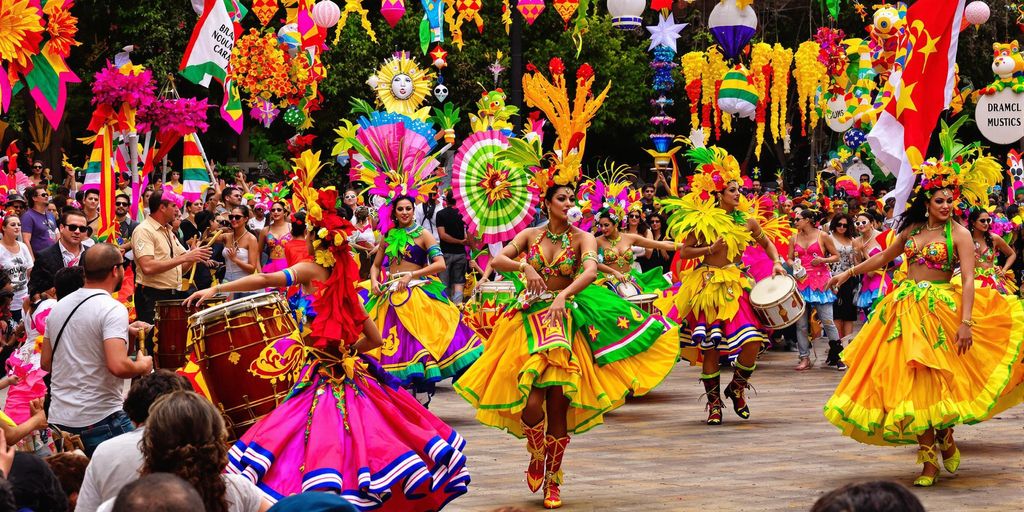
Samba Costumes and Their Evolution
Samba has always been synonymous with vibrant and elaborate costumes. Over the decades, the designs have shifted from traditional cultural outfits to more extravagant and theatrical styles. The feathers, sequins, and bold colors seen in samba costumes today are a reflection of the music’s energy and rhythm. These costumes are not just about aesthetics; they represent the spirit of Carnival and the celebration of life. Designers often draw inspiration from Brazil’s rich history, blending indigenous, African, and European influences into their creations.
Forró-Inspired Fashion Trends
Forró, with its roots in the rural Northeast of Brazil, has influenced casual and rustic fashion trends. Think light, breathable fabrics, checkered patterns, and cowboy-style boots. These styles echo the simplicity and warmth of forró’s origins. In recent years, forró-inspired fashion has found its way into urban settings, with modern twists like tailored plaid shirts and chic denim looks. This blend of traditional and contemporary styles showcases how music can shape everyday clothing choices.
Bossa Nova’s Impact on Visual Arts
Bossa Nova, known for its smooth and laid-back vibe, has had a subtle yet profound impact on visual arts. The minimalistic album covers of the 1960s, often featuring clean lines and muted colors, became iconic representations of the genre. Artists and designers continue to draw from this aesthetic, creating works that exude a sense of calm and sophistication. The connection between Bossa Nova and visual arts highlights the genre’s ability to influence not just sound but also visual culture.
Axé and Carnival Aesthetics
Axé music, born in the vibrant state of Bahia, is deeply tied to Carnival celebrations. Its influence on fashion is most evident in the colorful and dynamic outfits worn during these festivities. From beaded necklaces to flowing skirts, Axé-inspired fashion captures the essence of joy and movement. The music’s high-energy beats are mirrored in the bold patterns and bright colors of Carnival attire, making it a feast for the eyes as well as the ears.
Music as a Theme in Brazilian Art
Brazilian artists have long used music as a central theme in their work. Paintings, sculptures, and murals often depict scenes of dancing, musical instruments, and festivals. This artistic tradition serves as a visual celebration of Brazil’s musical heritage. For example, the iconic works of artist Candido Portinari often feature musicians and dancers, capturing the soul of Brazilian culture. Music-inspired art not only preserves but also amplifies the significance of these cultural expressions.
Dance Movements in Contemporary Design
The fluid and expressive movements of Brazilian dance have inspired contemporary designers in fields like fashion, architecture, and even furniture design. The curves and rhythms of dances like samba and forró are reimagined in flowing garments, curved building structures, and dynamic furniture pieces. This cross-disciplinary influence shows how deeply music and dance are embedded in Brazil’s creative identity.
The Future of Brazilian Music and Dance
Emerging Genres in Brazilian Music
Brazilian music is constantly evolving, with new genres and subgenres gaining popularity. Recent trends include the rise of “piseiro,” a modern twist on traditional forró rhythms, and “trap-funk,” which blends the beats of trap music with the raw energy of funk carioca. These genres reflect the creativity of younger generations, who mix global influences with local traditions to create something entirely fresh.
The Next Generation of Artists
A wave of young Brazilian artists is reshaping the music scene. Musicians like Duda Beat, Anitta, and João Gomes are pushing boundaries, blending styles like pop, funk, and regional sounds. These artists are not only redefining Brazilian music but are also making waves internationally, introducing the world to Brazil’s rich musical diversity.
Global Collaborations in Music
Collaborations between Brazilian artists and international stars are becoming more common. These partnerships, such as those between Anitta and global pop icons, bring Brazilian music to a broader audience. They also enrich the music itself, as artists exchange ideas and merge different cultural influences.
Sustainability in Music Festivals
Brazil’s iconic music festivals, like Rock in Rio and Lollapalooza Brazil, are moving toward more sustainable practices. Organizers are focusing on reducing waste, using renewable energy, and promoting local artists. These efforts not only help the environment but also set an example for festivals worldwide.
The Role of AI in Music Creation
Artificial intelligence is beginning to play a role in Brazilian music. From creating beats to assisting in songwriting, AI tools are helping artists experiment with new sounds. While some purists worry about losing the “human touch,” others see it as an exciting opportunity to innovate.
Preserving Traditional Dance Forms
As modern dance styles gain popularity, efforts to preserve traditional Brazilian dances like samba, frevo, and maracatu are intensifying. Community programs and cultural organizations are teaching these dances to younger generations, ensuring they remain a vibrant part of Brazil’s cultural identity.
Brazilian music and dance are evolving in exciting ways. As new styles blend with traditional rhythms, the future looks bright for artists and fans alike. This vibrant culture is not just about the past; it’s about what’s coming next. Join us on this journey and discover how you can stay connected to the rhythm of Brazil. Visit our website for more information!
Conclusion
Brazilian music and dance are a vibrant reflection of the country’s diverse culture and history. From the lively beats of samba to the heartfelt rhythms of forró, each style tells its own story while bringing people together in celebration. These traditions have not only shaped Brazil’s identity but have also gained recognition and admiration worldwide. Whether you’re swaying to samba at Carnival or stepping to forró at a local festa, the music and dance of Brazil offer a unique way to connect with its rich heritage. So, next time you hear those unmistakable rhythms, let yourself be carried away—it’s more than just entertainment; it’s a piece of Brazil’s soul.
Global Coverage, Local Rates
Experience hassle-free connectivity wherever you go.
Seamless Mobile Data Everywhere
